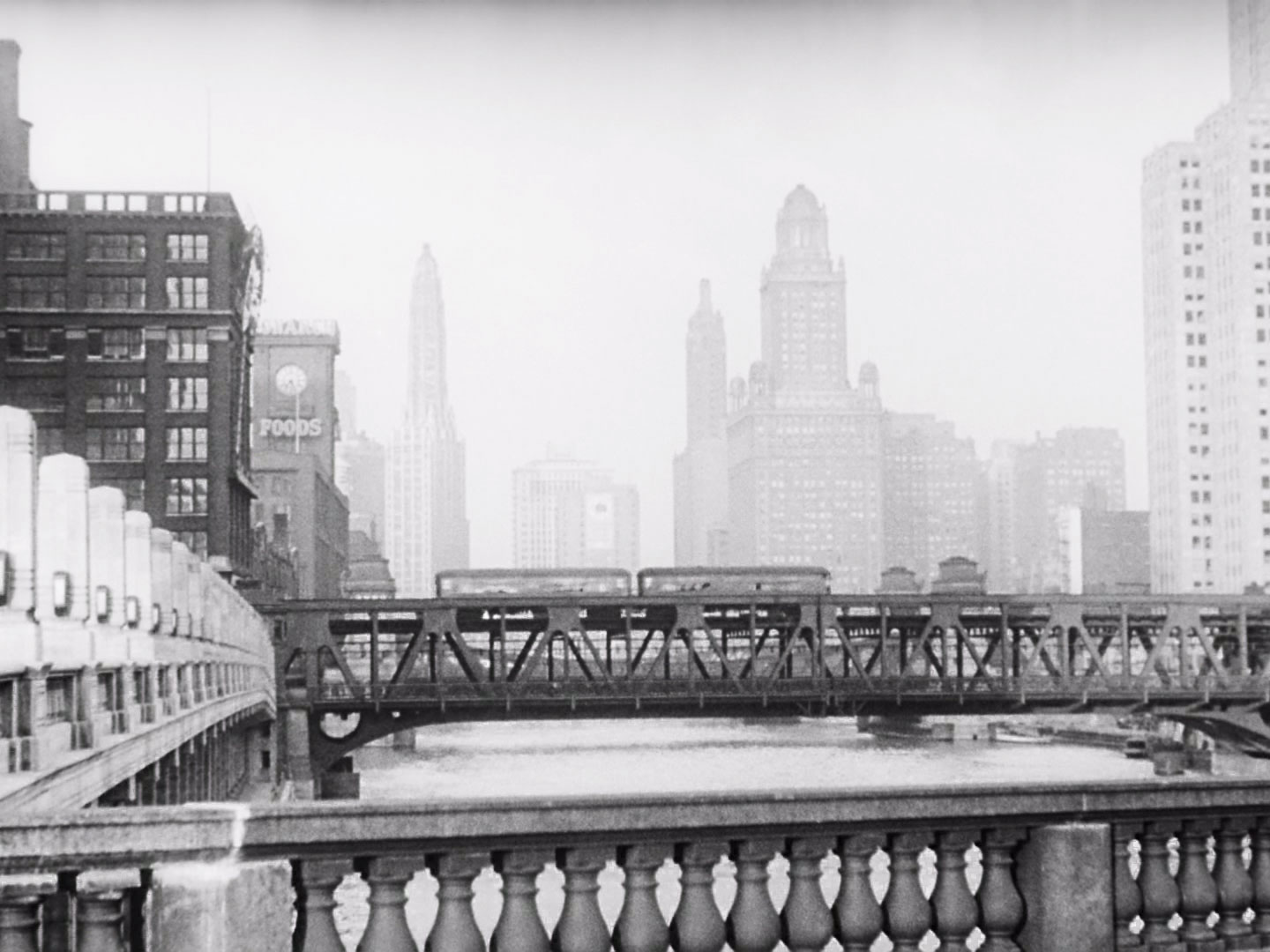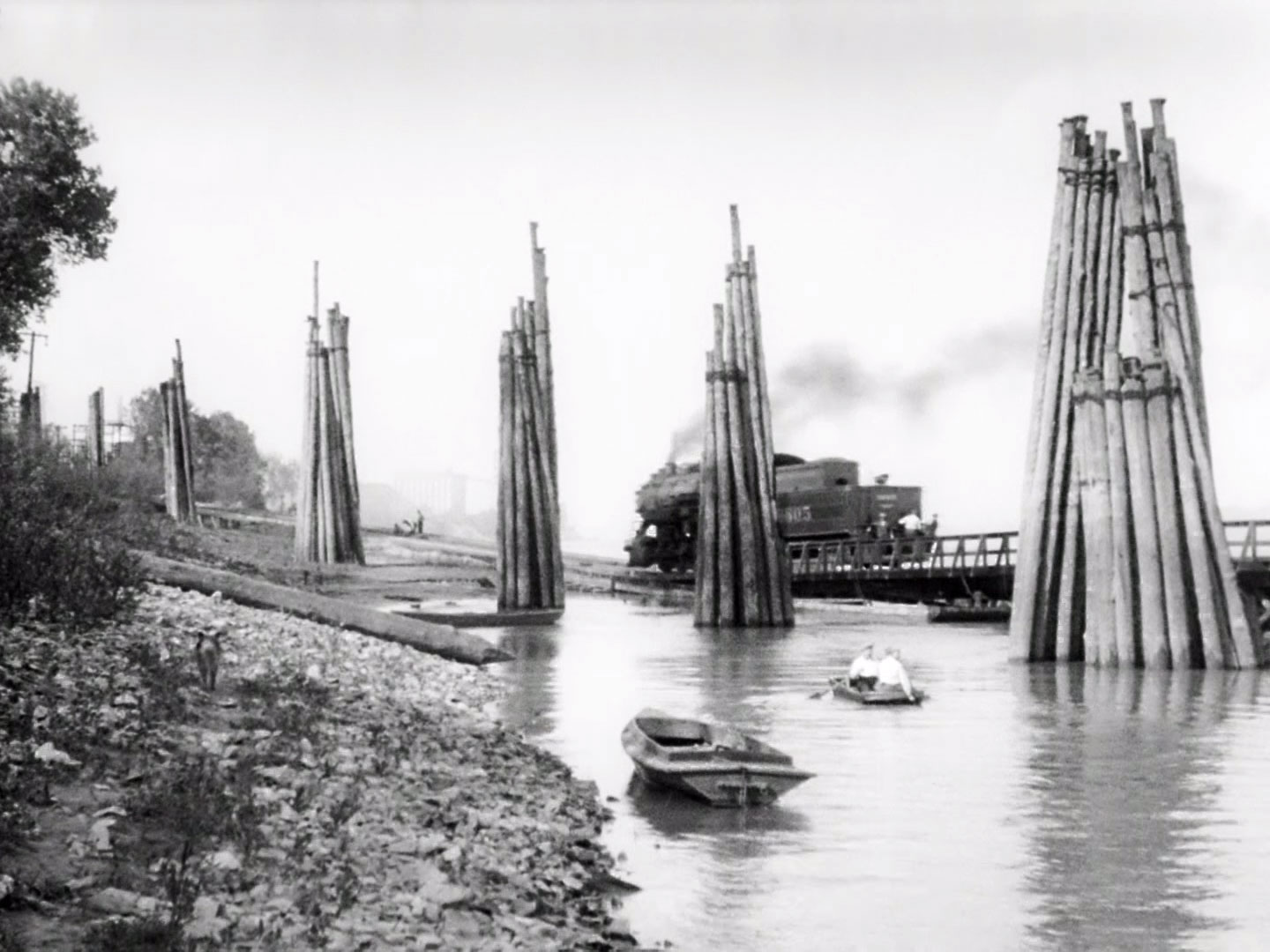Deutsche Version
Deu
table of content
“When I thought it never would surface, it suddenly began to grow in front of me: the big city. A thunderstorm of lightning-fast, terrific views… I plunged right into a solemn, resounding roaring and banging: the voice of Chicago.“
Heinrich Hauser, 1931
Chicago: The Forgotten Masterpiece of International Documentary Filmmaking
Heinrich Hauser, born 1901 in Prussia, filmed Chicago long before Hollywood discovered the authentic showplace. He went there at the height of the Great Depression, in 1931. It was only him and his camera. He manages without stars. He is not interested in the world of make-believe: no impressionist images, no experimental city poem, no travelogue or image film, no posed footage, certainly not one of the usual culture fi lms. The city was all that counted: the Naked City and the people living here. Hauser was obliged to Neue Sachlichkeit: New Objectivity – and to his aspirations and ambition as an artist.
A Life as Exciting as a Movie
Who was this Hauser? Maybe Heinrich Hauser was the last great self-made man Germany has brought up. He certainly thought outside the box of the German province, even while he worked in Germany. He was author of a novel that was awarded in 1928 with the prestigious Gerhart Hauptmann Prize titled BRACKWASSER [BRACKISH WATER], fi lmed posthumously. He was a novelist. journalist, feature writer and feuilletonist, for four months the chief editor of STERN magazine. He wrote reportages as well as science fi ction. His unique photographs are still striking. And he became a fi lmmaker when the term was not widely used. All his work was thought provoking, because it refl ected sheer authenticity.
He didn’t need to invent stories. He simply took them from his rich life experience. He was out and about with awoken, bright eyes, in Germany and all around the world: a naval cadet in Kiel, a watchman in Hamburg, a Freikorps soldier in Weimar, a mine-worker in Duisburg in the western part of the Ruhr Area. In the German capital he worked for a well-known circus but otherwise was constantly on the run: trying to escape the philistine life of a petite bourgeoise. Hauser became the proverbial globetrotter at a time when globetrotting was still diffi cult and an adventure: In Australia he worked as sheepshearer, cook und swimming instructor. He was a policeman in the Philippines, a motor mechanic in Chile. Student, smuggler, seafarer, a technical expert, a car and fl ying buff, pilot and test driver. He escaped Nazi Germany, became a writer and a farmer in the United States, émigré and rémigré: hyperactive, restless man, only driven by his visions. Even death was not mundane, when it came to him in March 1955: the proverbial one-man band, the only one who could claim to be the German Jack London. Hauser’s life was as thrilling and exciting as a movie. Hauser’s life was a movie. He only made a few fi lms. They are timeless and sure worth the effort to rediscover.
How the Laborer Lives
In his magnum opus Hauser portrays Chicago, the second-largest American city, as only he could do. His portray is very personal, realistic, exploding with austere authenticity, no scrollwork but fi lled with a deep understanding of what’s going on: the environment, the architecture, the stunning technique, the factories, then: the slaughterhouses, the social situation of the people who are living in this city, in the sun – and in the shadow. At no point Hauser tries to arbitrarily structure what he sees and subordinate it to his own principles. He just follows the momentum and records it with the objectivity of his camera lens.
Heinrich Hauser’s Chicago Film as Reflected in Contemporary Reviews
Exotic Like a Star Far Away
Hauser‘s film doesn’t end mildly. It only could end relentlessly and pensively. He was one of those who had eyes to see. His power of observation and the premonition of the true artist made him a “Seer”. And in Chicago he saw a refl ection of modern mankind’s fate. This movie is more than just a document of history. He wouldn’t, he couldn’t conceal the dark sides – and yet he admired the achievements he witnessed: This is the most beautiful city in the world: a technical dream in aluminum, glass, steel, cement and artificial suns, exotic like a star far away. Now Hauser’s great CHICAGO film will return to us from the vaults of film archives, with a newly arranged soundtrack that will bring the images back to life: as a symphony in pictures.
Imprint
Text: Dr. Rolf Giesen
Editorial staff: Molto Menz
Design: Christin Albert
absolut Medien, Am Hasenbergl 12, 83413 Fridolfing
Tel.: 030 285 39 87 0
Fax: 030 285 39 87 26

“When I thought it never would surface, it suddenly began to grow in front of me: the big city. A thunderstorm of lightning-fast, terrific views… I plunged right into a solemn, resounding roaring and banging: the voice of Chicago.“
Heinrich Hauser, 1931
Chicago: The Forgotten Masterpiece of International Documentary Filmmaking
Heinrich Hauser, born 1901 in Prussia, filmed Chicago long before Hollywood discovered the authentic showplace. He went there at the height of the Great Depression, in 1931. It was only him and his camera. He manages without stars. He is not interested in the world of make-believe: no impressionist images, no experimental city poem, no travelogue or image film, no posed footage, certainly not one of the usual culture fi lms. The city was all that counted: the Naked City and the people living here. Hauser was obliged to Neue Sachlichkeit: New Objectivity – and to his aspirations and ambition as an artist.


A Life as Exciting as a Movie
Who was this Hauser? Maybe Heinrich Hauser was the last great self-made man Germany has brought up. He certainly thought outside the box of the German province, even while he worked in Germany. He was author of a novel that was awarded in 1928 with the prestigious Gerhart Hauptmann Prize titled BRACKWASSER [BRACKISH WATER], fi lmed posthumously. He was a novelist. journalist, feature writer and feuilletonist, for four months the chief editor of STERN magazine. He wrote reportages as well as science fi ction. His unique photographs are still striking. And he became a fi lmmaker when the term was not widely used. All his work was thought provoking, because it refl ected sheer authenticity.
He didn’t need to invent stories. He simply took them from his rich life experience. He was out and about with awoken, bright eyes, in Germany and all around the world: a naval cadet in Kiel, a watchman in Hamburg, a Freikorps soldier in Weimar, a mine-worker in Duisburg in the western part of the Ruhr Area. In the German capital he worked for a well-known circus but otherwise was constantly on the run: trying to escape the philistine life of a petite bourgeoise. Hauser became the proverbial globetrotter at a time when globetrotting was still diffi cult and an adventure: In Australia he worked as sheepshearer, cook und swimming instructor. He was a policeman in the Philippines, a motor mechanic in Chile. Student, smuggler, seafarer, a technical expert, a car and fl ying buff, pilot and test driver. He escaped Nazi Germany, became a writer and a farmer in the United States, émigré and rémigré: hyperactive, restless man, only driven by his visions. Even death was not mundane, when it came to him in March 1955: the proverbial one-man band, the only one who could claim to be the German Jack London. Hauser’s life was as thrilling and exciting as a movie. Hauser’s life was a movie. He only made a few fi lms. They are timeless and sure worth the effort to rediscover.


How the Laborer Lives
In his magnum opus Hauser portrays Chicago, the second-largest American city, as only he could do. His portray is very personal, realistic, exploding with austere authenticity, no scrollwork but fi lled with a deep understanding of what’s going on: the environment, the architecture, the stunning technique, the factories, then: the slaughterhouses, the social situation of the people who are living in this city, in the sun – and in the shadow. At no point Hauser tries to arbitrarily structure what he sees and subordinate it to his own principles. He just follows the momentum and records it with the objectivity of his camera lens.


Heinrich Hauser’s Chicago Film as Reflected in Contemporary Reviews
Exotic Like a Star Far Away
Hauser‘s film doesn’t end mildly. It only could end relentlessly and pensively. He was one of those who had eyes to see. His power of observation and the premonition of the true artist made him a “Seer”. And in Chicago he saw a refl ection of modern mankind’s fate. This movie is more than just a document of history. He wouldn’t, he couldn’t conceal the dark sides – and yet he admired the achievements he witnessed: This is the most beautiful city in the world: a technical dream in aluminum, glass, steel, cement and artificial suns, exotic like a star far away. Now Hauser’s great CHICAGO film will return to us from the vaults of film archives, with a newly arranged soundtrack that will bring the images back to life: as a symphony in pictures.


Imprint
Editorial staff: Molto Menz
Design: Christin Albert
absolut Medien, Am Hasenbergl 12, 83413 Fridolfing
info@absolutmedien.de
www.absolutmedien.de
© absolut MEDIEN GmbH





